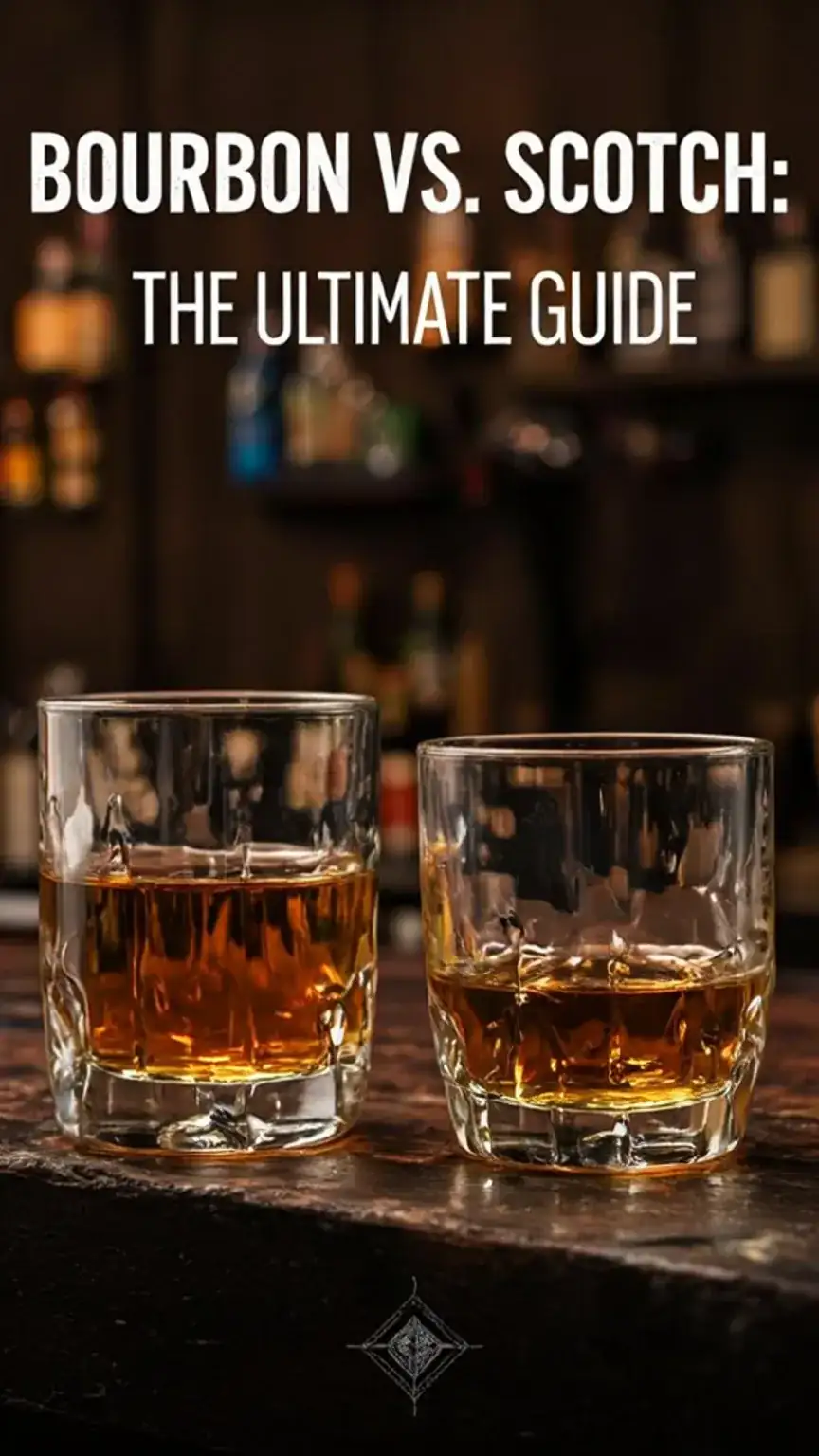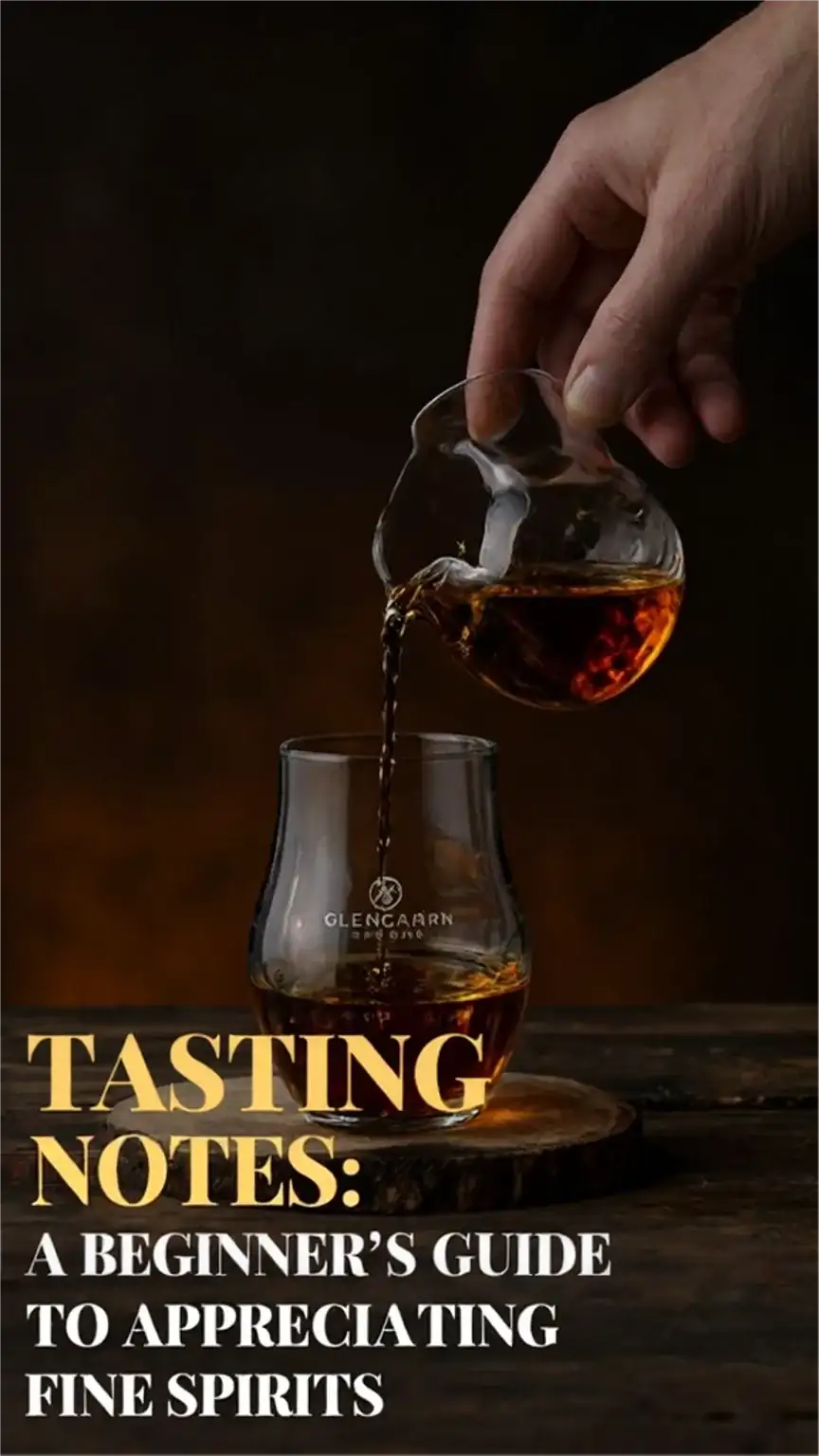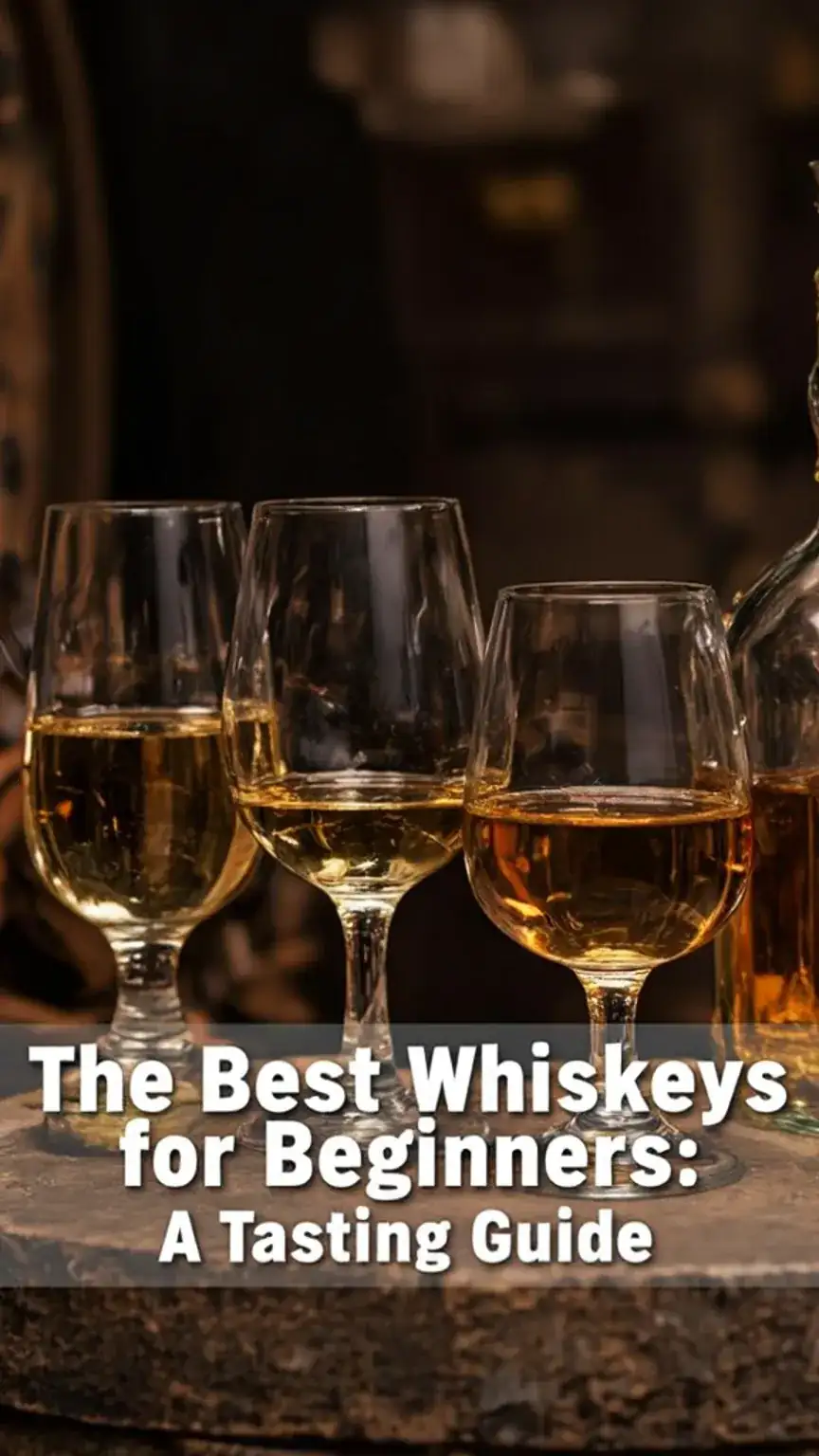⚠️ Gentleman’s Notice – Alcohol content inside. Savor responsibly.
Welcome to the world of whiskey, gentlemen! As a guy who’s navigated the nuanced currents of life, from the factory floor to the boardroom, I’ve found that few beverages offer the same blend of history, craftsmanship, and pure, unadulterated enjoyment as a good dram of whiskey. However, the sheer variety can be daunting. You walk into a bar, scan the shelves, and suddenly, you’re faced with a dizzying array of bottles. Bourbon? Scotch? What’s the real difference?
Let’s face it, understanding the nuances of bourbon versus scotch can feel like deciphering a secret code. For too long, this knowledge has been siloed, leaving many to simply point and hope for the best. But your whiskey journey shouldn’t be a shot in the dark. It’s about appreciating the subtle differences, understanding the heritage, and ultimately, discovering what truly tantalizes your taste buds. Imagine walking into a gathering, confidently ordering a perfectly suited drink, and perhaps even impressing a date with your newfound wisdom. That’s the power of knowing your spirits.
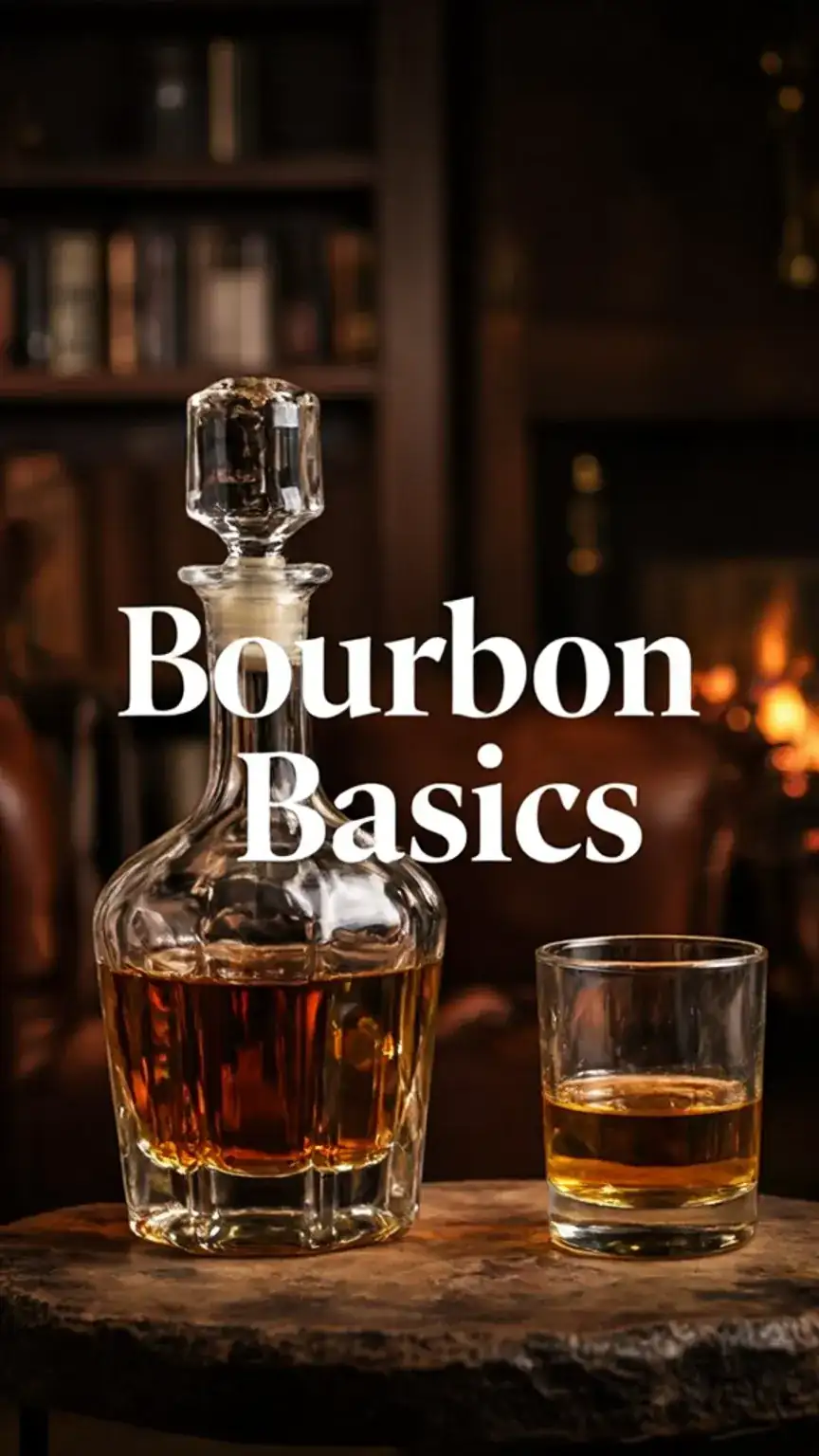
For the ladies looking to understand the man in your life a little better, or perhaps seeking a thoughtful gift idea, consider this your cheat sheet. Understanding what he enjoys, especially when it comes to a classic like whiskey, can be a fantastic way to connect. Bookmark this guide for the man who appreciates quality and has a discerning palate – or for the one who’s always asking, “What’s the difference again?”
This comprehensive guide will cut through the confusion, diving deep into the distinct characteristics of bourbon and scotch. We’ll explore their production, ingredients, and, most importantly, their unique flavor profiles. By the end, you’ll be equipped to navigate the whiskey world with confidence, making informed choices and savoring every sip. Think of me as your seasoned guide, a fellow traveler on the path to whiskey enlightenment.
The Heart of the Matter: What Separates Bourbon from Scotch?
At their core, both bourbon and scotch are indeed whiskies, but their distinctions are as pronounced as a jazz solo versus a bagpipe lament. The journey of each spirit begins with its foundational elements and the meticulous process that transforms them into liquid gold. Understanding these core differences is the first step to appreciating their individual brilliance.
The most significant differentiator lies in their primary ingredients. Bourbon, by definition, must be made from a mash bill containing at least 51% corn. This high corn content is the bedrock of its character, laying the groundwork for its signature sweetness. Conversely, scotch whisky’s soul is derived from malted barley. This barley undergoes malting, a process that introduces a distinct nutty, cereal-like foundation to the spirit.

Production methods further sculpt their identities. Bourbon is mandated to be aged in new, charred oak barrels. This crucial step imparts those rich, caramel, vanilla, and oaky notes that bourbon lovers cherish. The char on the inside of the barrel acts like a natural filter and flavor enhancer. Scotch, however, has a more varied aging tradition. It can be aged in ex-bourbon or ex-sherry casks, among others. This reuse of barrels, particularly sherry casks, often contributes to scotch’s complexity, adding layers of dried fruit, spice, and often, a subtle smokiness.
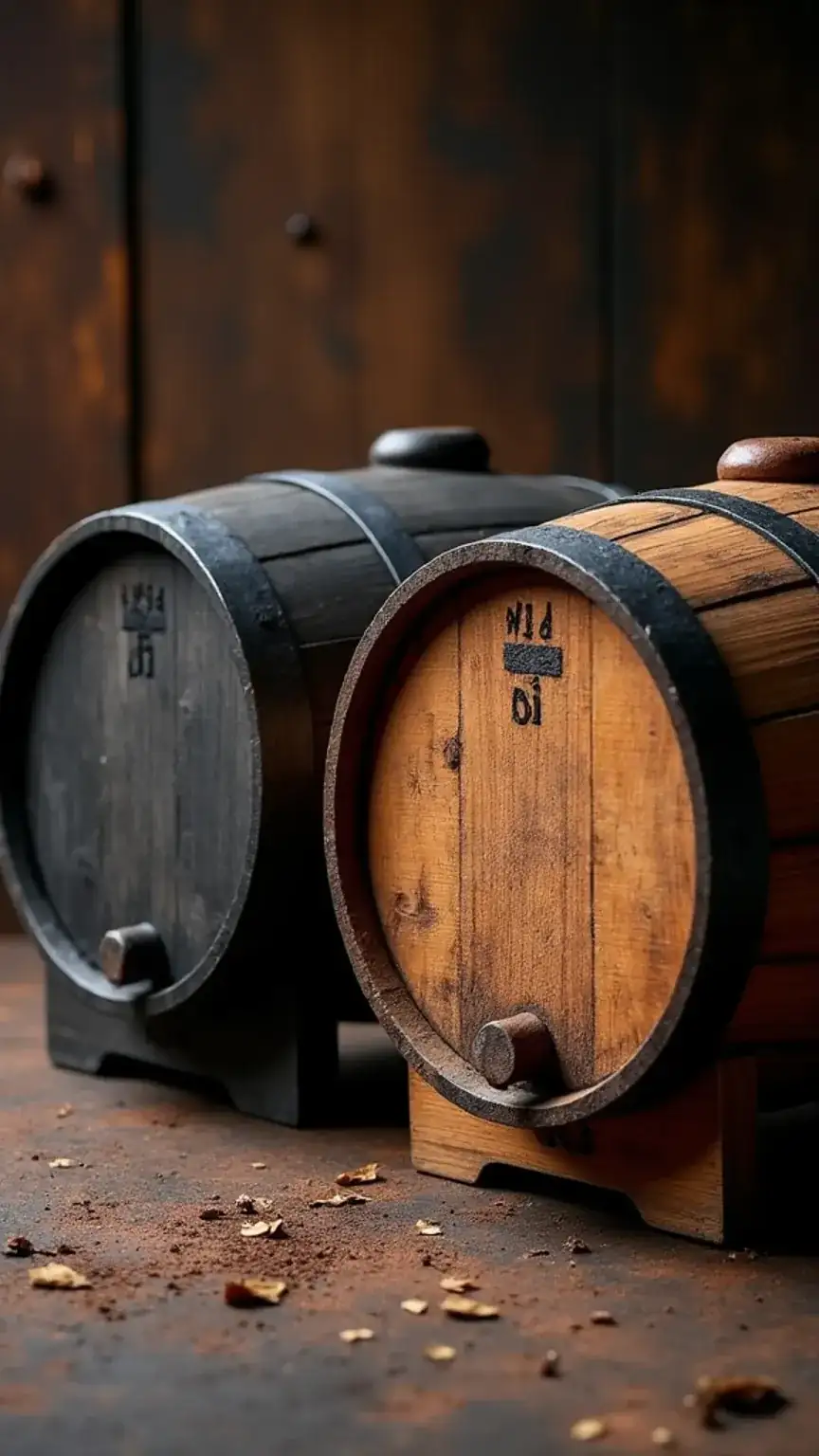
Consequently, their flavor profiles reflect these fundamental differences. Bourbon typically presents a profile that is sweeter, more approachable, and boasts notes of caramel, vanilla, and toffee. It’s often described as having a warmer, more robust character. Scotch, due to its barley base and diverse cask aging, tends to be more complex and nuanced. It can range from light and floral to rich and smoky, with a spectrum of flavors including peat, sea salt, dried fruit, and spice.
Unveiling the Flavors: Tasting Notes and Savvy Pairings
Now that we understand the “what,” let’s delve into the “how”—how to taste and enjoy these magnificent spirits. Exploring tasting notes is akin to learning a new language, one that describes the sensory experience of a well-crafted drink. And the right pairing can elevate that experience from good to unforgettable.
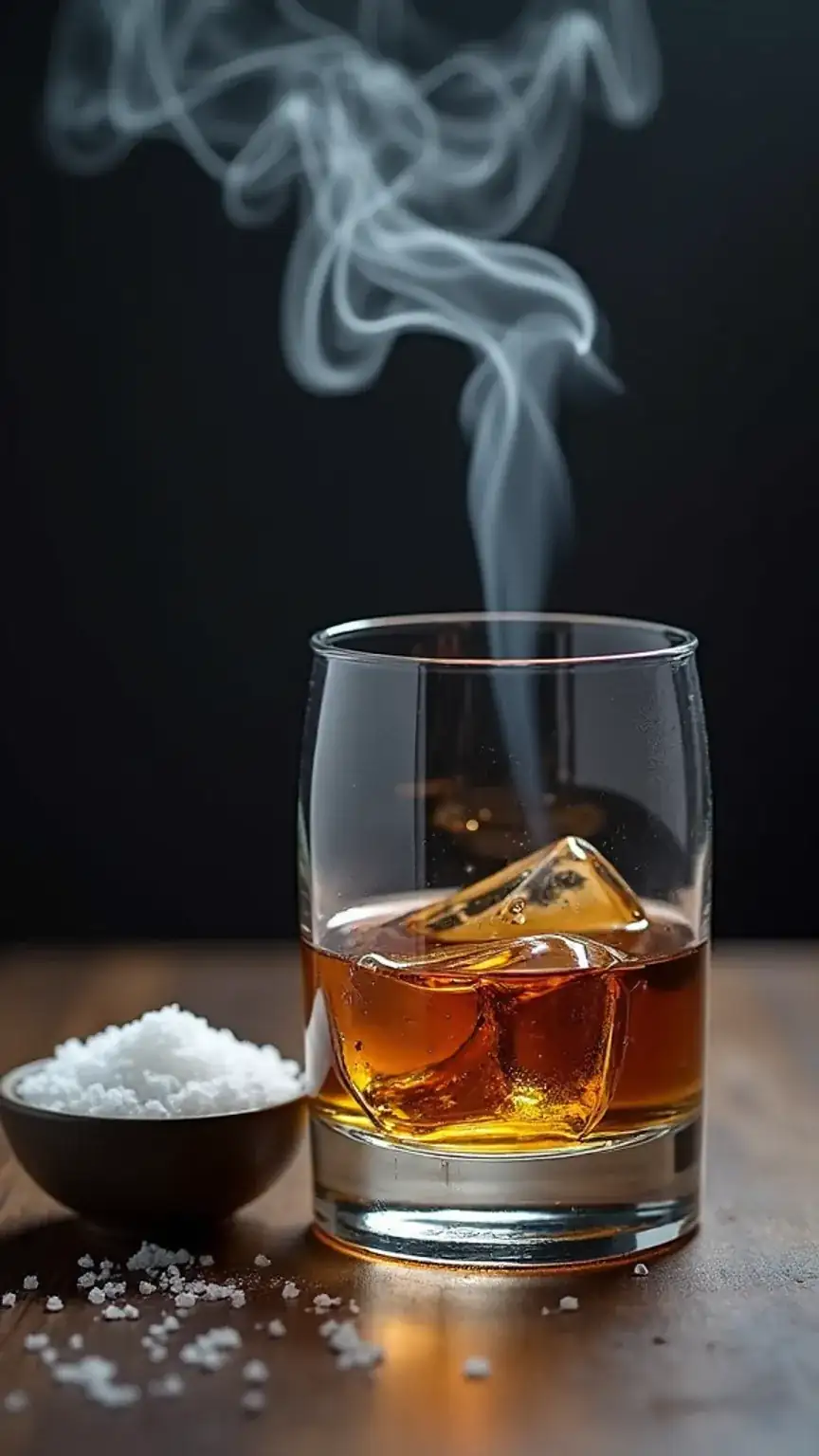
Bourbon: The Sweet Embrace
When you pour a glass of bourbon, anticipate a sensory journey dominated by sweetness and warmth.
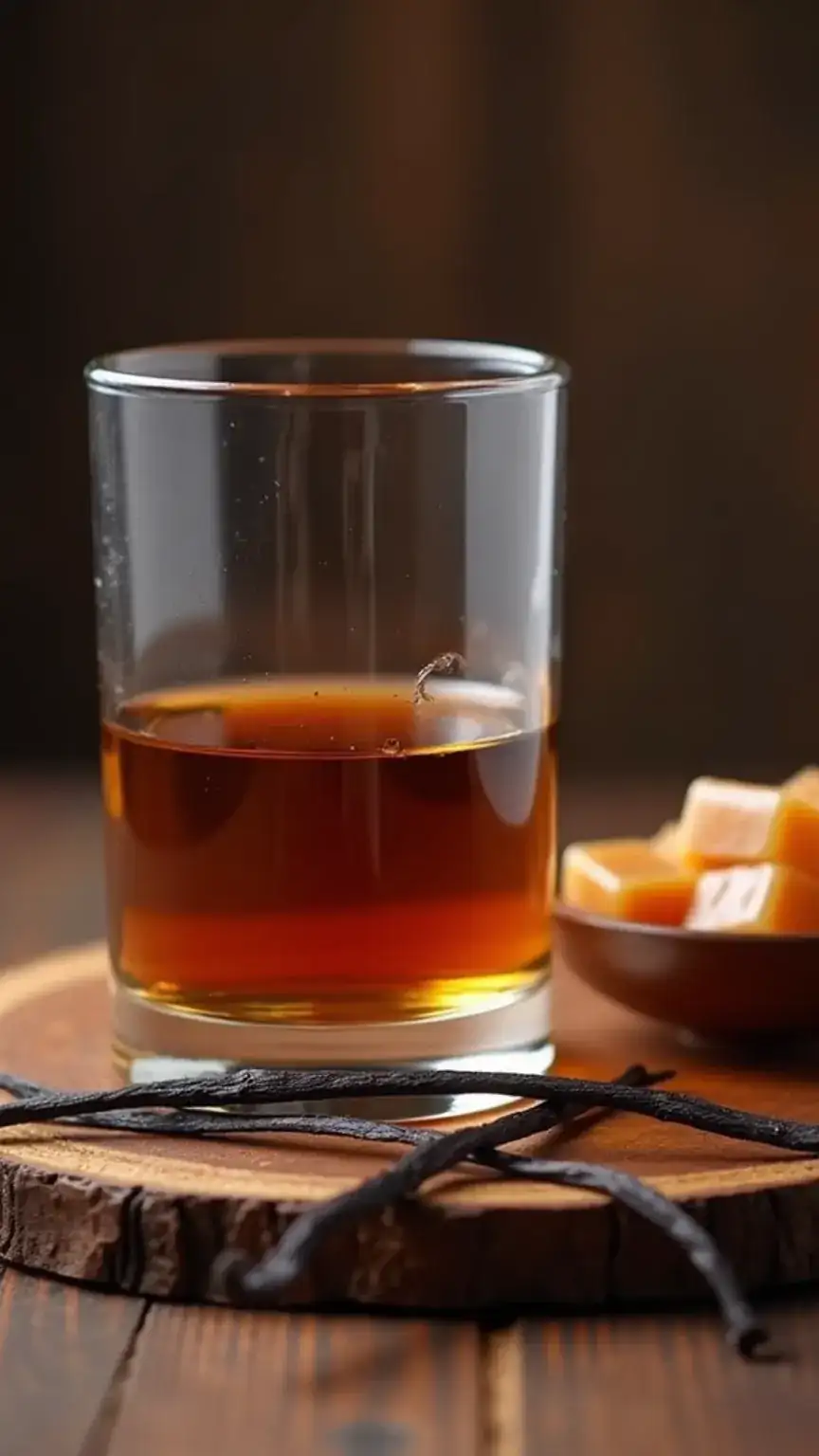
Tasting Notes
Expect prominent notes of rich caramel, sweet vanilla, warm oak, and often hints of toffee or butterscotch. You might also detect subtle fruit undertones, perhaps dried apricot or cherry, and a pleasant spiciness from the rye often present in the mash bill. The finish is usually smooth and lingering.
Pairing Suggestions
Bourbon’s inherent sweetness makes it a natural fit for classic cocktails. An Old Fashioned or a Manhattan allows its character to shine through. However, bourbon isn’t just for cocktails. It’s also a superb companion to a fine cigar, the sweetness complementing the tobacco’s richness. For a quiet evening, simply enjoy it neat or with a single ice cube, perhaps alongside a good book, letting its comforting character envelop you.
Scotch: The Complex Symphony
Scotch offers a more diverse and often more intricate tasting experience, largely influenced by its region of origin and cask maturation.
Tasting Notes
The hallmark of many scotches, particularly those from Islay, is smoky, peaty, and complex flavors. However, this is just one facet. You’ll also find scotches with notes of dried fruit (like raisins or figs from sherry casks), sea salt, brine, heather, floral notes, honey, and a distinct oak character. The finish can vary dramatically, from a gentle warmth to a lingering, smoky embrace.
Pairing Suggestions
Scotch’s complexity lends itself to both traditional pairings and more adventurous ones. Classic Scottish dishes like haggis, neeps, and tatties are a natural fit, their earthy flavors harmonizing with the spirit. Similarly, a rich, dark chocolate or a well-aged cheese can be exquisite partners. And yes, like bourbon, scotch can also be wonderfully enjoyed with a good cigar, the smoke and peat notes creating a wonderfully layered experience.
For example, a Speyside scotch with its fruitier notes might pair beautifully with crème brûlée, while an Islay scotch with its smoky character could stand up to a grilled steak with a peppery crust.
Your Whiskey Journey: Tips for the Aspiring Connoisseur
Navigating the world of whiskey as a beginner can feel like charting unknown territory. However, with a few guiding principles, you can embark on this flavorful adventure with confidence and enjoyment. Remember, this is a marathon, not a sprint, and the discoveries along the way are part of the pleasure.
1. Start with a Classic
When you’re beginning your whiskey exploration, it’s wise to start with recognized benchmarks. These are bottles that consistently deliver quality and represent the core characteristics of their respective styles.
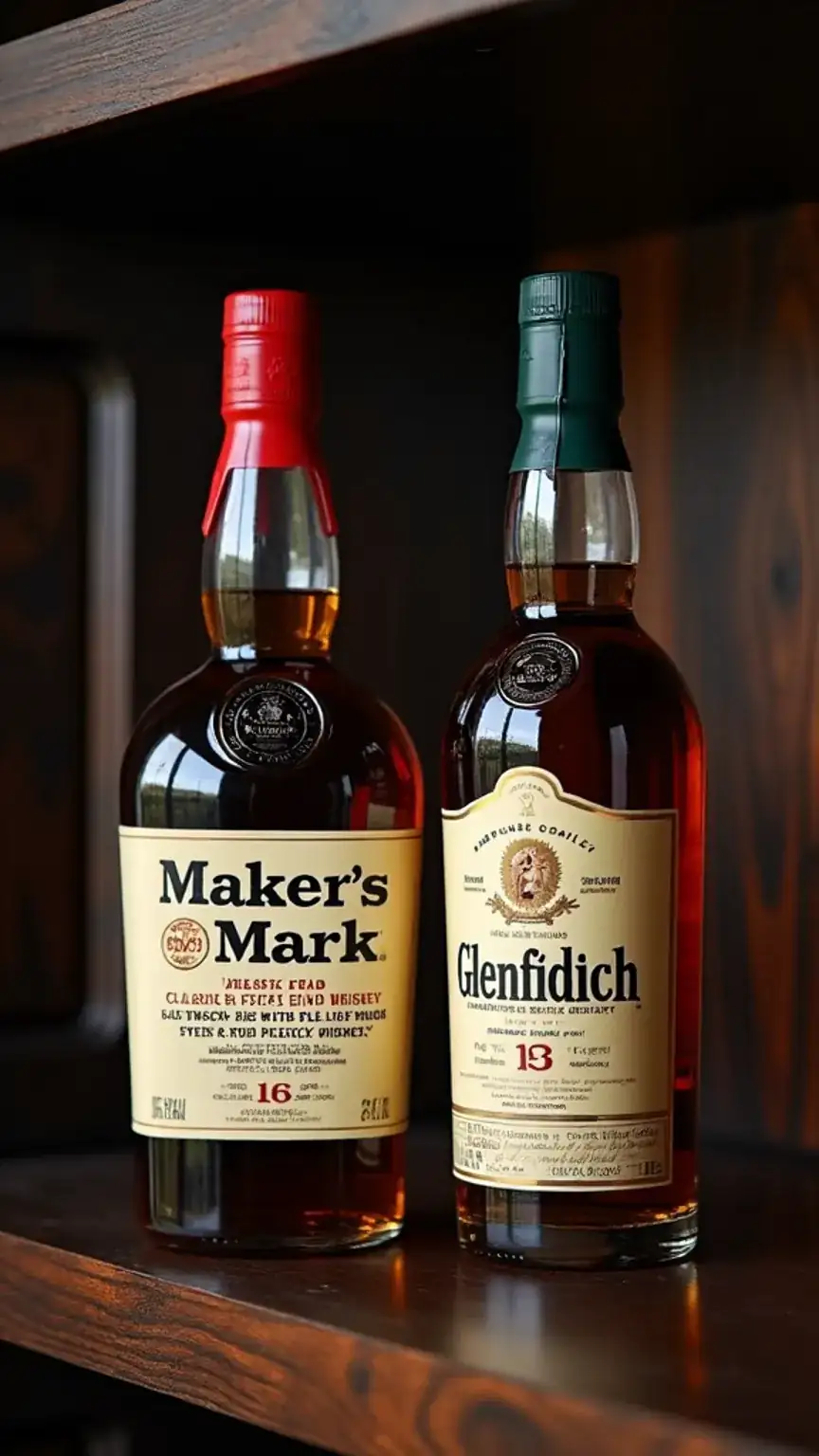
- For bourbon, consider a Maker’s Mark. Its smooth, approachable profile, with notes of caramel and vanilla, makes it an excellent entry point. Another fantastic option is Buffalo Trace, offering a slightly more complex profile with hints of spice and fruit.
- For scotch, a Glenfiddich 12 Year Old is a quintessential Speyside scotch, known for its smooth, fruity, and slightly oaky character. Alternatively, The Macallan 12 Year Old Sherry Oak offers a delightful introduction to sherry cask influence, with rich dried fruit and spice notes.
2. Experiment with Different Styles
Once you’ve established a baseline with classics, the real fun begins. Don’t be afraid to venture beyond your initial preferences. There are numerous regional variations and production techniques that create vastly different flavor profiles.
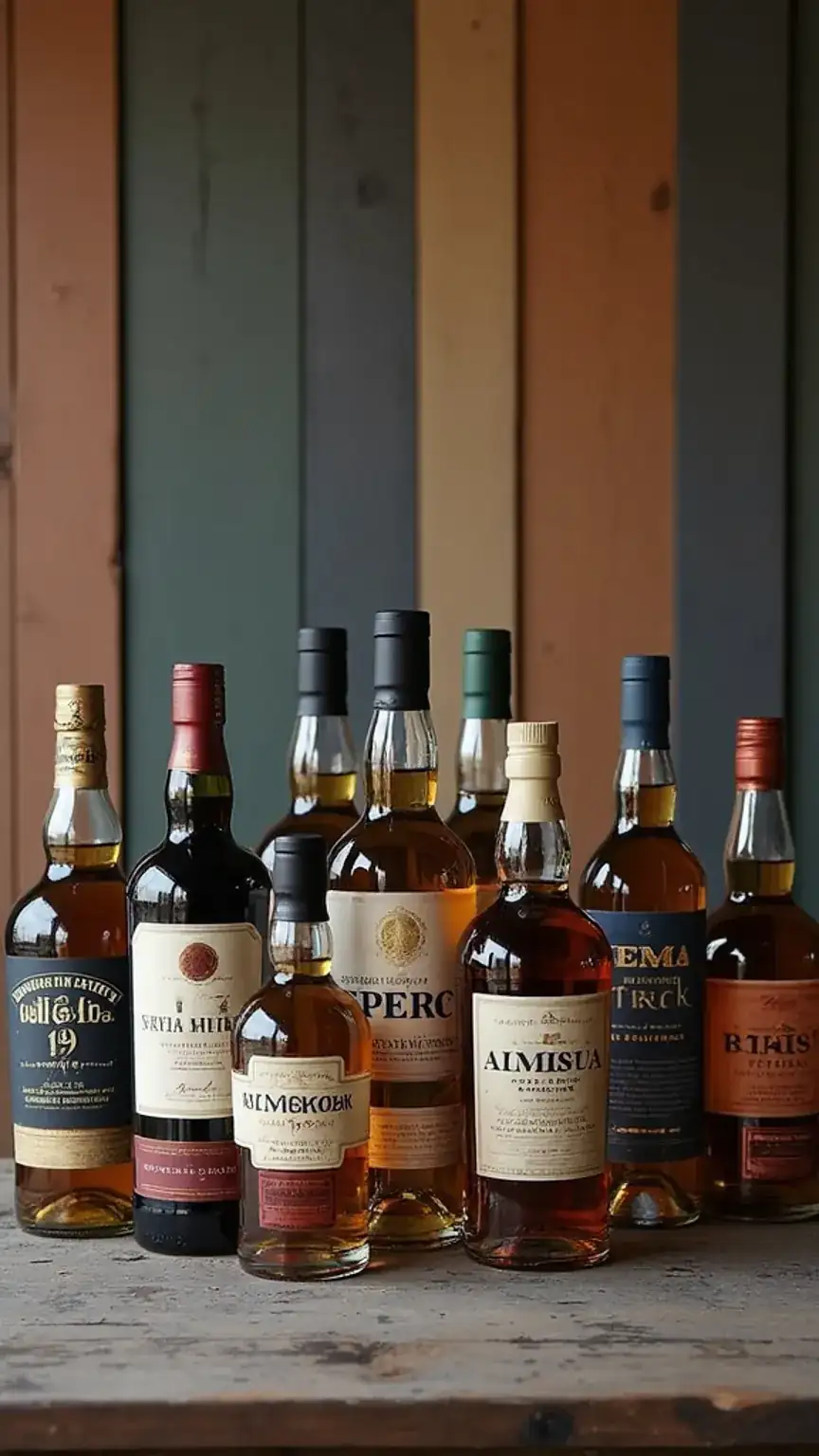
- Try different mash bills for bourbon—some have more rye, leading to a spicier profile. Explore single malt versus blended scotch. Consider whiskies from different regions of Scotland, each with its own distinct character: Speyside for fruity and floral, Highland for diverse profiles, Lowland for lighter and grassy notes, and Islay for peaty and smoky expressions.
- For example, if you enjoyed the sweetness of Maker’s Mark, you might explore a high-rye bourbon like Wild Turkey 101 for a spicier kick. Conversely, if you appreciated the oak in Glenfiddich, a Highland scotch like Glenmorangie Original 10 Year Old could be your next step.
3. Keep an Open Mind and Palate
This is perhaps the most crucial tip. Your taste is subjective, and what one person finds exceptional, another might find merely pleasant. Embrace the journey of discovery.
- Don’t be swayed by hype or brand snobbery. Try whiskies that appeal to you based on their descriptions, regions, or even bottle design. Attend whiskey tastings or tasting events if possible. These offer opportunities to sample a variety of spirits without committing to a full bottle.
- Furthermore, don’t hesitate to experiment with pairings. That rich dark chocolate might be surprisingly good with a peaty scotch, or a simple shortbread cookie could highlight the subtle sweetness in a lighter bourbon. Your future self, now more attuned to the nuances of whiskey, will thank you for this adventurous spirit.
The Final Pour: Your Whiskey Wisdom Awaits
In conclusion, the world of whiskey, particularly the distinction between bourbon and scotch, is a rich tapestry woven from ingredients, tradition, and meticulous craftsmanship. While bourbon offers a reliably sweet and warming embrace, defined by its corn base and new charred oak aging, scotch presents a more complex and varied landscape, characterized by malted barley and a diverse range of cask maturation.
Whether you find yourself drawn to the caramel and vanilla notes of a fine bourbon or the smoky, maritime character of a classic scotch, the true joy lies in the exploration. This guide has equipped you with the fundamental knowledge to approach your next dram with confidence and a discerning palate. Remember to always keep an open mind, experiment with different styles and pairings, and most importantly, savor the experience.
Ready to elevate your whiskey wisdom? Start by picking up a classic bourbon and a classic scotch, and conduct your own side-by-side tasting. Note the differences in aroma, flavor, and finish. Share your discoveries and tag a friend who needs a style intervention in their whiskey knowledge!
Share this guide with your buddies!
